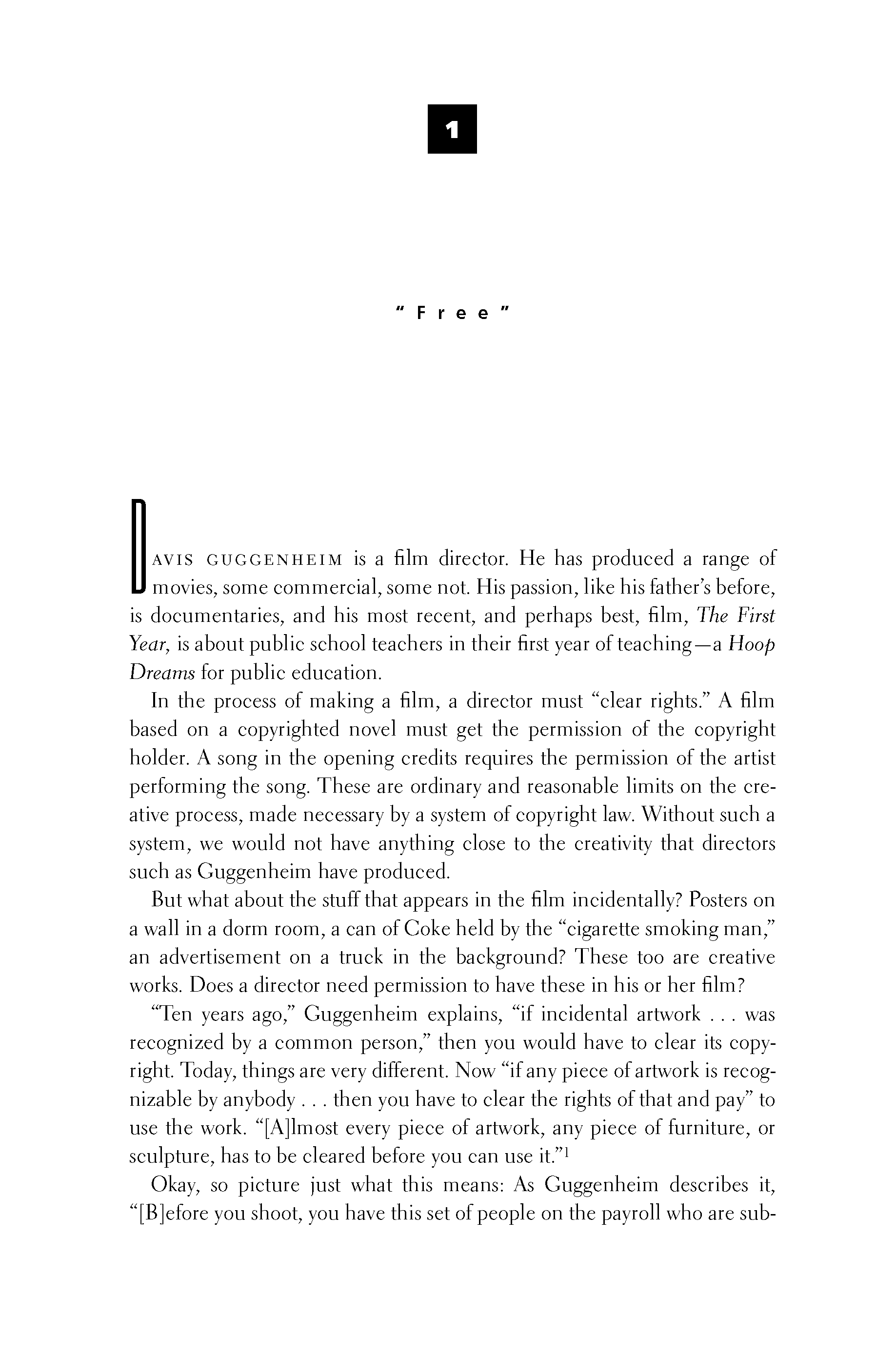 p002 _
-chap- _
toc-1 _
p003w _
toc-2 _
+chap+ _
p004
p002 _
-chap- _
toc-1 _
p003w _
toc-2 _
+chap+ _
p004
Davis Guggenheim is a film director. He has produced a range of
movies, some commercial, some not. His passion, like his father's before,
is documentaries, and his most recent, and perhaps best, film, _The_First_
_Year,_ is about public school teachers in their first year of teaching -- a _Hoop_
_Dreams_ for public education.
In the process of making a film, a director must "clear rights." A film
based on a copyrighted novel must get the permission of the copyright
holder. A song in the opening credits requires the permission of the artist
performing the song. These are ordinary and reasonable limits on the cre-
ative process, made necessary by a system of copyright law. Without such a
system, we would not have anything close to the creativity that directors
such as Guggenheim have produced.
But what about the stuff that appears in the film incidentally? Posters on
a wall in a dorm room, a can of Coke held by the "cigarette smoking man,"
an advertisement on a truck in the background? These too are creative
works. Does a director need permission to have these in his or her film?
"Ten years ago," Guggenheim explains, "if incidental artwork... was
recognized by a common person," then you would have to clear its copy-
right. Today, things are very different. Now "if any piece of artwork is recog-
nizable by anybody... then you have to clear the rights of that and pay" to
use the work. "[A]lmost every piece of artwork, any piece of furniture, or
sculpture, has to be cleared before you can use it."[1-1]
Okay, so picture just what this means: As Guggenheim describes it,
"[B]efore you shoot, you have this set of people on the payroll who are sub-
[[3]]
p002 _
-chap- _
toc-1 _
p003w _
toc-2 _
+chap+ _
p004